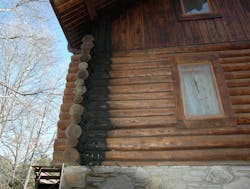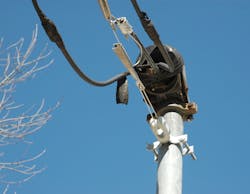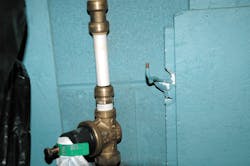Based on my observations over the past 25-plus years working in the electrical trade, I’ve come to realize that sometimes the neutral conductor is treated as the Rodney Dangerfield of the electrical system — it simply “gets no respect.”
The apparent reasons for this lack of recognition are varied. Maybe it’s because the neutral doesn’t rate high enough to merit overcurrent protection like its more impressive “hot” counterparts. Or perhaps it has to do with the fact that a neutral does not get to attach to switches.
I can’t tell you how many times I’ve heard: “It’s only a neutral,” or “Don’t worry about the neutral; it can’t shock you — just make sure the hot connections are tight.” It was once very common for inspectors to allow multi- and double-tapped neutrals. Although this practice was never compliant, it was also not a definitive rule. The 2002 NEC finally put this to rest by specifically spelling it out.
Hopefully, most trained electricians and inspectors realize the true importance of the neutral conductor and its integrity of the electrical system. In a standard residential 120V/240V service, the neutral carries the unbalanced load of the split-phase system back to the source. A perfectly balanced load on the opposite phased 120V circuits would present no current on the neutral feeder. Any imbalance in the load on the opposite legs will return on the neutral in the amount of the difference between the loads.
Most electricians have experienced service calls when there is a problem with a neutral in either loose or open connections. The tell-tale signs are usually dimming lights/bright lights that change when appliances and other circuits cycle on and off. Clients sometime think their home is haunted or has been invaded by gremlins. The following case study chronicles a situation I was called out to troubleshoot.
Photo 1. The charred streak on the side of the cabin is where the coaxial cable was located.
The initial concern was noted when the elderly resident lost service to her television. She called her son to see if he could figure out what was wrong. When he arrived at the home, no specific problem was evident, except the fact that the TV didn’t work. He walked outside to check the cable box and saw a large charred streak up the side of the log house (Photo 1). His first conclusion was that the home had been struck by lightning. However, that hypothesis seemed unlikely because there had been no bad weather for several days. His mother later complained of dimming lights and some circuits not working. The son gave me a call to come and check things out.
It didn’t take long to figure out that the neutral was damaged or open by taking some measurements and hearing about the “gremlin-like” happenings. We soon noticed the messenger cable (i.e., service neutral) at the service mast was broken (Photo 2).
Photo 2. The service neutral at the weatherhead had broken apart.
I called the electric utility and asked it to send out a crew and repair the damaged messenger cable. While waiting for them to arrive, I began to check the charred log siding. The TV cable entered the home and ran up the side of the house in the charred section. The coax was melted and burned (Photo 3).
Photo 3. Charred remains of a coaxial cable section that ran up the side of the house.
Further evaluation revealed that the original and only grounding electrode for the home was an underground galvanized water pipe. The pipe was abandoned due to low flow a few years back and was replaced with PEX pipe. Although the metal pipe was still present, the plumber (or someone… I always like to blame plumbers) apparently felt the grounding electrode conductor (GEC) was no longer needed, so he disconnected it from the pipe (Photo 4). Now, with the main neutral feeder open, the only available return path for the neutral current was on the coax grounded shield. And with no grounding connection at the house, the first point of grounding for the coax was at the electric utility pole some 250 ft from the house. (Note: The lack of a grounding electrode in this situation most likely had little effect, and the result would have been the same.)
Photo 4. When the galvanized water pipe was replaced with PEX, the original GEC was disconnected.
We don’t know how long the home was using the coax for the service neutral. The owner told us the light dimming/brightening had been going on for some time. Fortunately, the coax melted open before the logs got hot enough to ignite and burn down the house.
Twitty began his home inspection business in 2004 after retiring from a 30-year career at Ford Motor Co., where he worked as an industrial electrician. He is a licensed electrician in Tennessee and holds certifications from the ICC as a residential building inspector and residential electrical inspector. He can be reached at [email protected].
About the Author
Mike Twitty
Electrician
Twitty began his home inspection business in 2004 after retiring from a 30-year career at Ford Motor Co., where he worked as an industrial electrician. He is a licensed electrician in Tennessee and holds certifications from the ICC as a residential building inspector and residential electrical inspector. He can be reached at [email protected].




